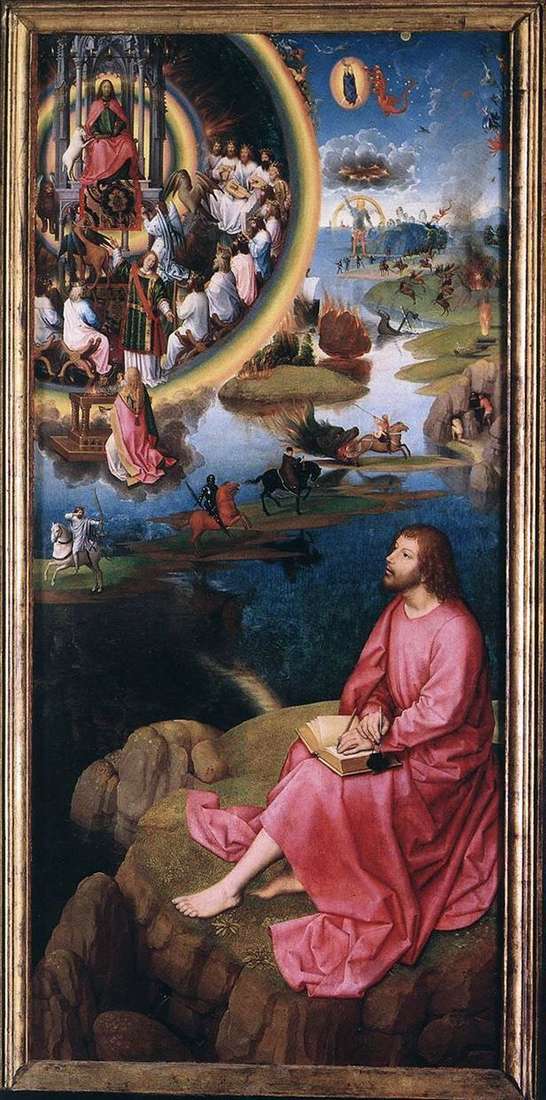
On the right casement is John the Theologian on Patmos. The images on the capitals of the columns above the heads of both saints on the central part of the work are another illustration of their biographies. However, there is also a third theme, reflected in the background. Although it is included in the general space of the picture, it refers exclusively to donators: monks and nuns at the St. John’s Hospital in Bruges. This is the scene of the spill of imported wine by one of the monks of the hospital. Precise spilling of wine was one of the important sources of income for the institution.
Exiled after being tortured to the island of Patmos in the Aegean Sea, John sits with a book in his lap. The pen is immersed in the inkpot, penknife at the ready. The saint looks up. His vision fills all space: air, water and earth. On the throne with a stone canopy sits the Lord. Surrounded by a rainbow, he is dressed in red and green clothes; his face and hands radiate a greenish glow.
Heavenly vision is surrounded by another rainbow. There is also the following plot: the hand of the Lord rests on a book with seven seals. The angel points to her and asks John: “Who is worthy to open this book and to remove its seals?” . The lamb reveals six seals one by one; four horsemen appear, and a cosmic catastrophe begins. The sun explodes, the stars fall from the sky. Both rich and poor seek refuge in caves. When the seventh seal is opened, the hand out of the cloud over the rainbow hands the seven trumpets to the seven angels. Below, another angel knelt before the altar. On the altar are burning coals, which he dumps on the ground, causing thunder and earthquakes. Subsequent events, each of which notifies the sound of the pipe, are depicted in decreasing in size in accordance with the perspective scenes. Hail and fire fall upon the earth
From the mountains crashing down into the sea, ships are dying. A fallen star poisons fresh water; at the rectangular well a dead body is spread. An angel flies across the sky, heralding grief at the next sounds of trumpets. On the right, another star falling from the sky is visible with the key “from the bottomless pit. She opened the bottomless pit, and smoke came out of the pit… And the locusts came out of the smoke… By sight, the locusts were horse-like… … and the noise from her wings is like a knock from chariots, .. in her tails there were stings, but her power was to harm people for five months. ” . Opposite this scene, hordes of horsemen carry death and destruction. Soldiers in red and gray armor rush on beasts with lion heads and snakes instead of tails. Behind them appears a huge angel, “… .. his head was a rainbow, and his face was like the sun, and his feet were like pillars of fire, in his hand he had a book opened… “. And then Memling also painstakingly illustrates the text of Revelation. Seven thunderings are depicted in the form of explosions above the angel’s head; The final scene refers to the wife and the dragon. The Virgin Mary appears high in the sky, the angel holds her Baby out of the reach of the red seven-headed monster, his tail sweeps the stars from the sky. wa it affects the archangel Michael. In the distance, above the line of the water table, Dragon transmits its power to the seven-headed sea monster with the body of a leopard. The seven thunders are depicted as explosions over the head of an angel; the angel raises his right hand to heaven and stretches the book to John; John himself with his hands upstairs stands nearby. The final scene refers to the wife and the dragon. High in the sky the Virgin Mary appears; Angel holds her baby out of reach of the red seven-headed monster. His tail sweeps stars from the sky. Below it is depicted how the dragon pursues the Virgin Mary who has regained its wings; on his right is the archangel Michael. In the distance, above the line of the water horizon, the dragon transfers its power to the seven-headed sea monster with the body of a leopard. The seven thunders are depicted as explosions over the head of an angel; the angel raises his right hand to heaven and stretches the book to John; John himself with his hands upstairs stands nearby. The final scene refers to the wife and the dragon. High in the sky the Virgin Mary appears; Angel holds her baby out of reach of the red seven-headed monster. His tail sweeps stars from the sky. Below it is depicted how the dragon pursues the Virgin Mary who has regained its wings; on his right is the archangel Michael. In the distance, above the line of the water horizon, the dragon transfers its power to the seven-headed sea monster with the body of a leopard. Angel holds her baby out of reach of the red seven-headed monster. His tail sweeps stars from the sky. Below it is depicted how the dragon pursues the Virgin Mary who has regained its wings; on his right is the archangel Michael. In the distance, above the line of the water horizon, the dragon transfers its power to the seven-headed sea monster with the body of a leopard. Angel holds her baby out of reach of the red seven-headed monster. His tail sweeps stars from the sky. Below it is depicted how the dragon pursues the Virgin Mary who has regained its wings; on his right is the archangel Michael. In the distance, above the line of the water horizon, the dragon transfers its power to the seven-headed sea monster with the body of a leopard.
It can hardly be called an accident that the Apocalypse – a prophecy about the end of the world – turned out to be the second most important topic in the altar. It serves as a formidable warning to believers, like the Last Judgment, which is a relevant topic for hospital walls. Righteous souls in the sky, a gathering of saints and angels around the removed Apostle – this plot Memling repeatedly portrayed at the request of narcissistic lovers of luxury – merchants, nobles and prelates – for their personal chapels. However, such a work has a very different effect when it is close to the sick and suffering, whose chambers openly adjoin the church. The gazes of the dying lead them to the world of virgins in golden brocade, silks and ermines, in golden crowns with glittering precious stones, to which baby Jesus is drawn. What is it: the beginning of Christian humanism or the decline of the passing era?
 The altar of the two john. Left wing by Hans Memling
The altar of the two john. Left wing by Hans Memling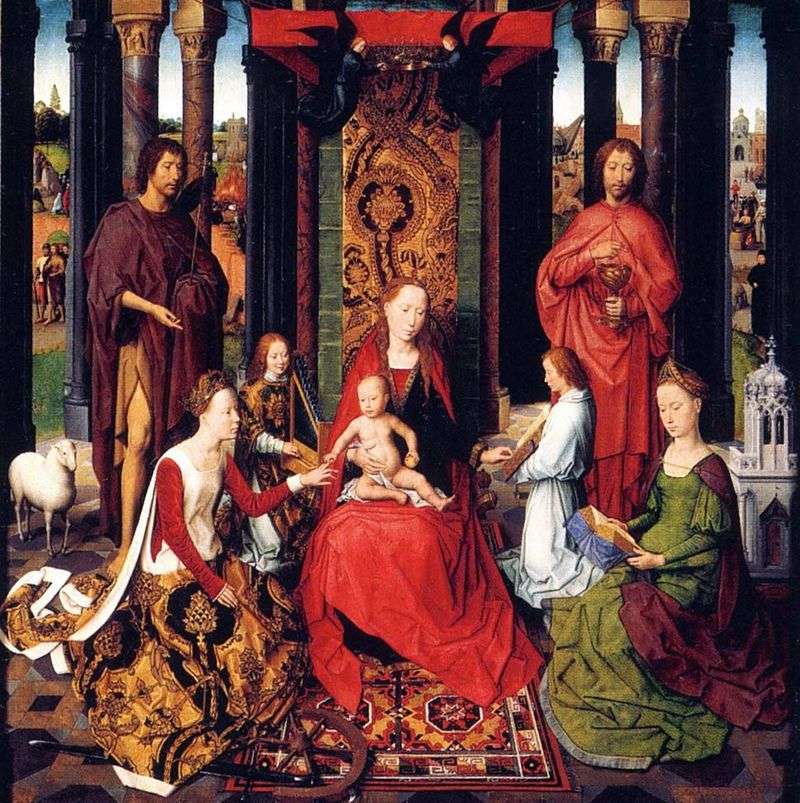 Altar of the Two Johannes by Hans Memling
Altar of the Two Johannes by Hans Memling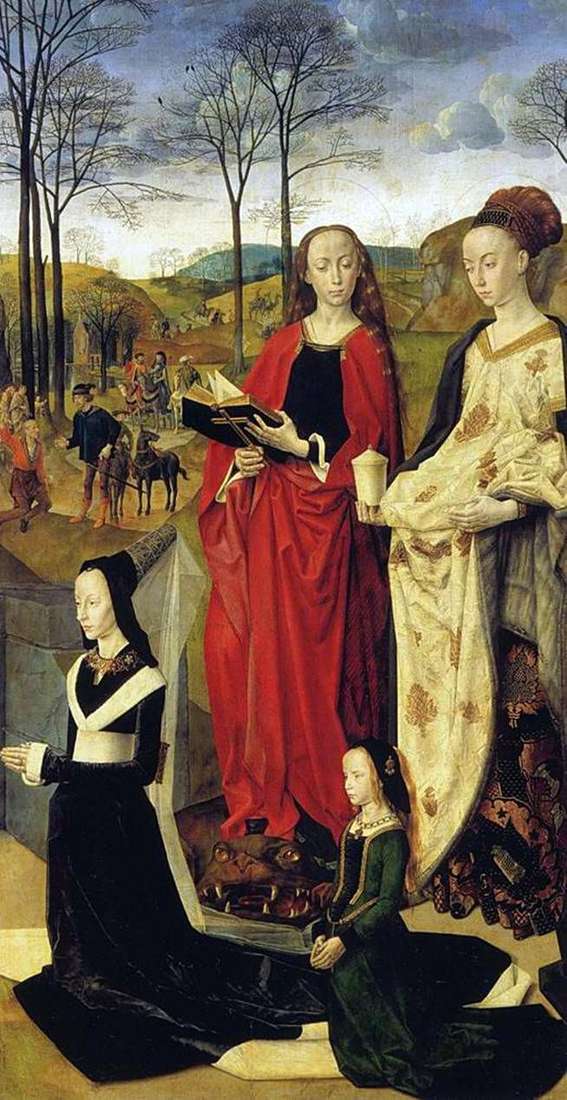 Christmas (Altar of Portinari). Right wing by Hugo Gus
Christmas (Altar of Portinari). Right wing by Hugo Gus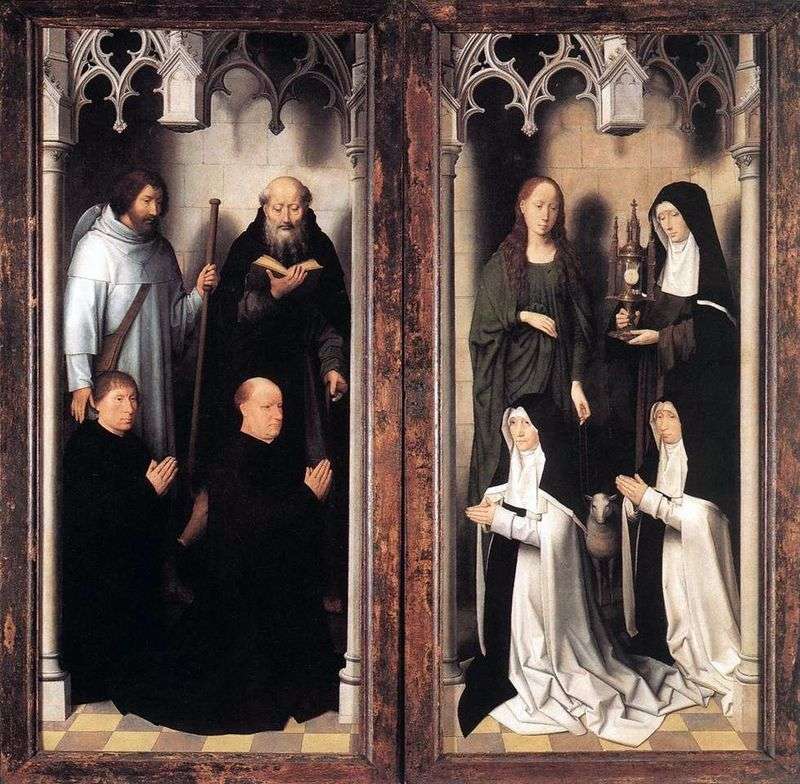 The altar of the two john. External doors by Hans Memling
The altar of the two john. External doors by Hans Memling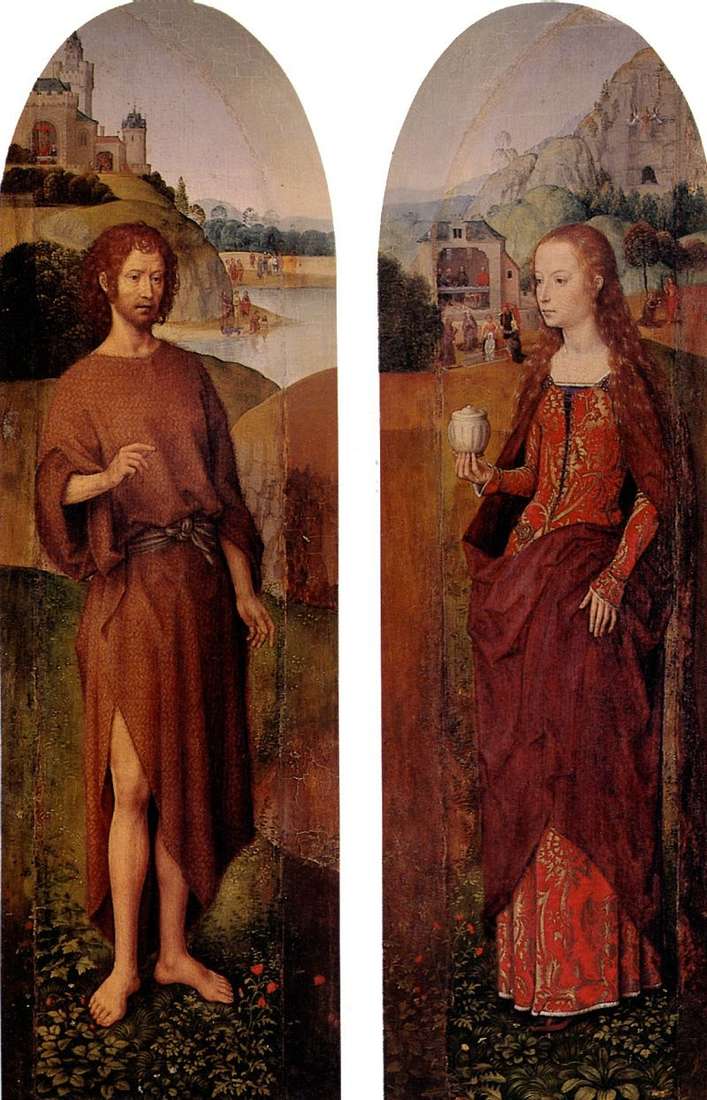 St. John the Baptist and St. Mary Magdalene. Triptych Side Sash by Hans Memling
St. John the Baptist and St. Mary Magdalene. Triptych Side Sash by Hans Memling Diptych. Martin van Nyuvenhof. Left half by Hans Memling
Diptych. Martin van Nyuvenhof. Left half by Hans Memling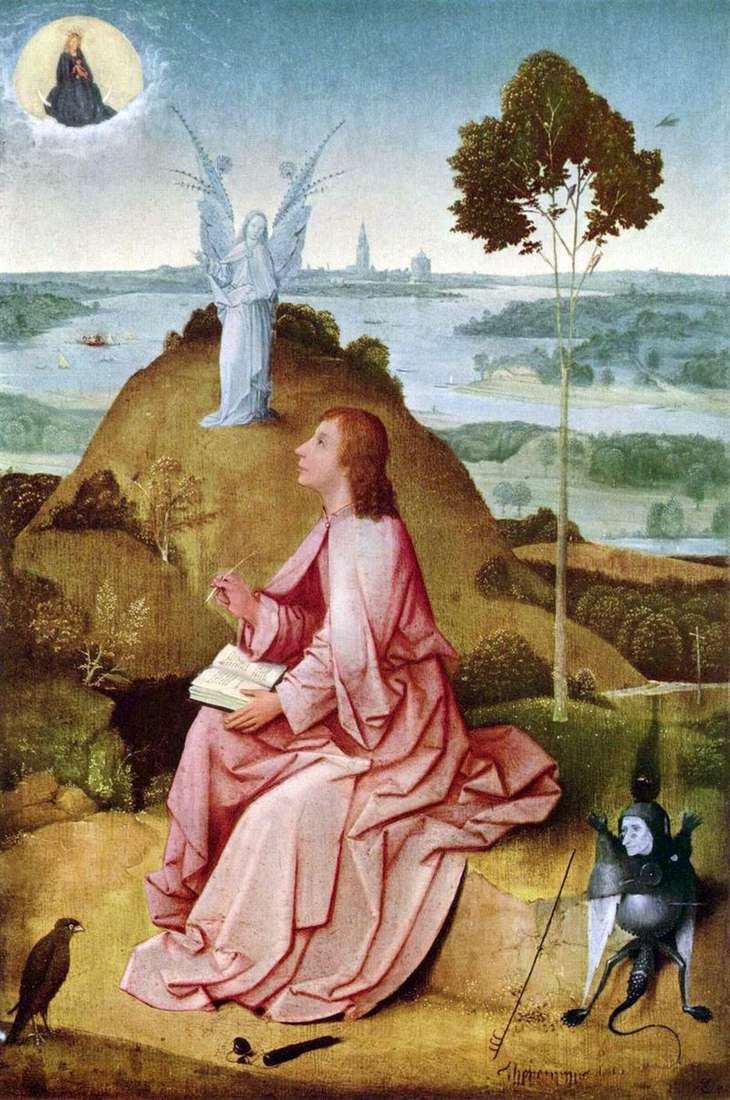 St. John the Evangelist on the island of Patmos by Hieronymus Bosch
St. John the Evangelist on the island of Patmos by Hieronymus Bosch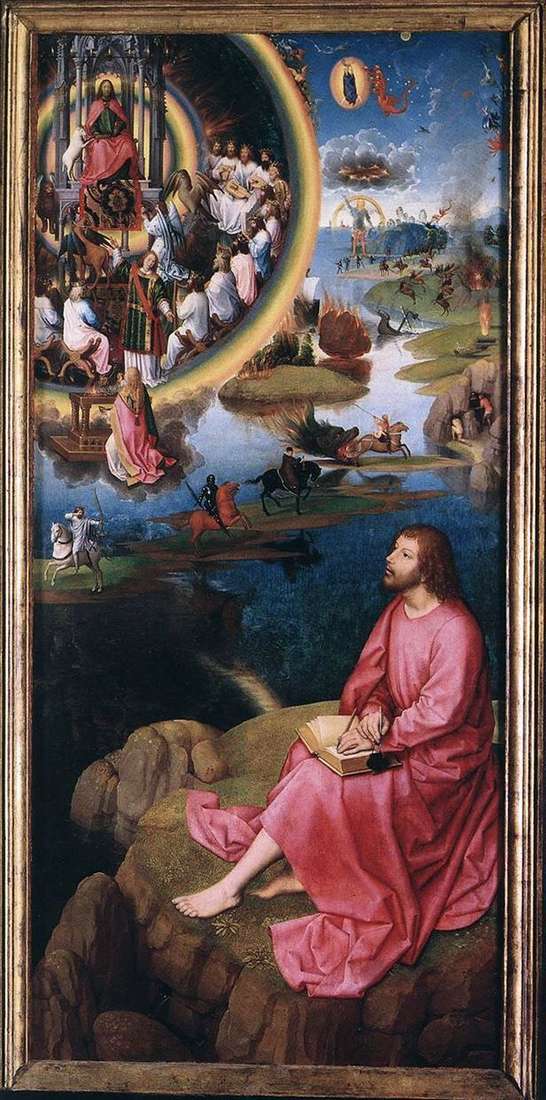 El altar de dos juan. Ala derecha – Hans Memling
El altar de dos juan. Ala derecha – Hans Memling